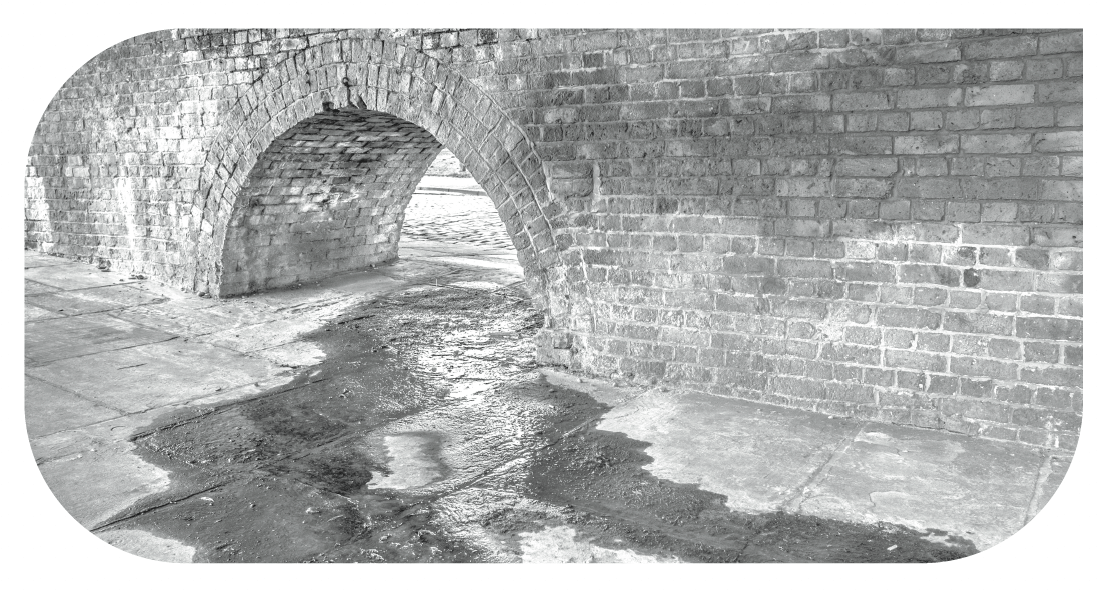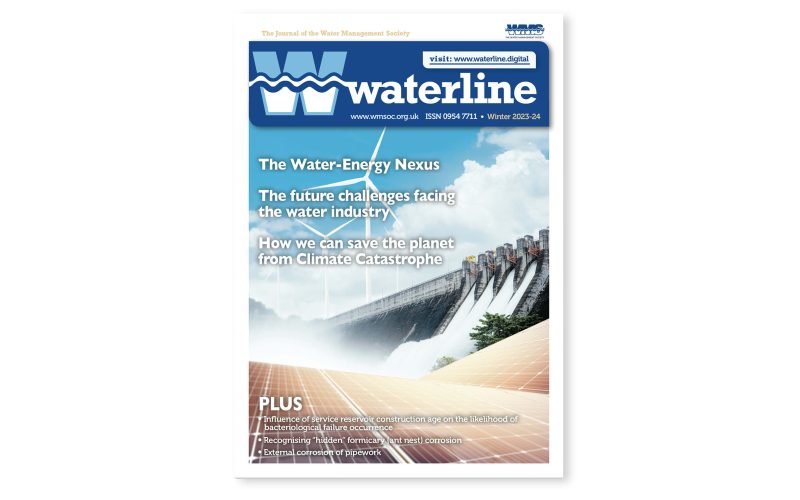As featured in Waterline Winter 2023-24
The future challenges facing the water industry
Written by Anthea Davies MSc, CMIOSH, FRSC, AIEMA, MWSoc. – ADepta Consulting Limited.
You’ll hear a lot today about the pressures the sector is facing. Water resources. River and bathing water quality. Climate change. Cost of living pressures. The issues themselves aren’t new. But in the face of continued public concern the sector’s every action is given greater scrutiny. Recently, there’s been close attention on how companies are dealing with the pressures on water resources. And there’s strong, continuing concern about sewage discharges, that all of this has led to a steady decline in trust in water companies. The scale of the challenge is already evident.
Climate change, river water quality, biodiversity and the sustainable use of resources are just some of the major challenges facing water utilities in the UK and globally. Water is the essence of life but is an increasingly stressed resource. Despite covering more than 70% of the planet, only a tiny fraction is available as fresh, clean drinking water. On top of that, the climate emergency is making access to water even harder. Desertification, extreme weather, and less predictable weather patterns make it difficult to provide enough clean drinking and bathing water, adding yet more pressure on the system.
The UK Government’s new Environmental Improvement Plan includes goals for clean and plentiful water and Defra’s Plan for Water sets out its commitments and actions to provide an ‘integrated plan for delivering clean and plentiful water’.
Professionals across the sectors, who are passionate about driving the change that is needed for a future, will be key to addressing water scarcity as well as the more obvious impacts on the environment.
Into the past:
In 1858, Joseph Bazalgette the Chief Engineer of the London Metropolitan Board of Works was commissioned to take charge of the new sewer system to be built in London. His pioneering plans involved building 1,100 miles of drains under London’s streets, to feed into 82 miles of new brick-lined sewers and carry the effluent to six ‘intercepting sewers’. The whole project was not completed until 1875 and the Victorian brick-lined tunnels are still the basis of London’s sewer system today.
(Source: Museum of London).

This Victorian design, along with release systems to prevent flooding in times of heavy rain, was replicated across the UK. Cities grew and the networks grew with them, with responsibilities embedded in the Public Health Act 1875.
The Water Resources Act 1963 saw water split from direct public authority control with the establishment of river authorities and water resources boards, The Water Act 1971 established water authorities independent of councils, and in 1983 the foundations for privatisation were laid. The water authorities became private companies in 1989, taking them out of the public sector and into a space where new private investment was enabled. The Office of Water Services (Ofwat) – a government body was set up in 1989 to regulate the activities of the water companies in England and Wales and to protect the interest of their consumers.
(Source: IEMA Transform Jun/Jul 2023).
Where we are today:
The UK, having privatised its water supply, and water companies have made themselves unpopular by the lack of investment in infrastructure, with high volumes of leakages and waste being discharged illegally, polluting waterways and seas. This matter of ownership is a critical issue when analysing access to water, which dictates investment in water infrastructure and decides who gets to consume it.
The mainstream is well informed, and the media keeps us updated on poor performance by the Water Companies by publishing articles with details of the frequent pollution incidents and the increasing fines being imposed.

‘Thames water fined £4m after sewerage discharge’. Thames Water Utilities Limited has been fined £4 million for discharging half a million litres of sewage into Seacourt Stream and Hinksey Stream in Oxford over 2 days in 2016. The judge said “This fine sends out a clear warning to the boards of all water companies – invest heavily in maintaining your sewers and don’t drop the ball when it comes to carrying out that maintenance. Incidents like this are preventable and completely unacceptable, particularly at a time when the need to protect the water environment for wildlife and people has never been greater and when public consciousness on environmental matters is so high” This brings the total fines levied against Thames Water since 2017 to £32.4 M, for 11 cases of water pollution in Oxfordshire, Buckinghamshire, and Berkshire.
(Source: IEMA Transform Journal Feb/March 2022).
Anglian Water has been fined £1,221,000 following two court cases relating to pollution incidents that occurred in 2019…
(Source: IEMA Transform Dec/Jan 2022/23).
‘Water company pays for environmental damage’. Yorkshire Water has agreed to pay £300,000 to Yorkshire Wildlife Trust following a sewage discharge incident in Leeds in 2018.
Source: IEMA Transform April/May 2022).
‘Record Fine for Anglian Water over sewage spill’. Anglian Water has been fined £2.65m after pleading guilty at Chelmsford Magistrate’s court to allowing millions of litres of untreated sewage to overflow into the North Sea. It is the largest- ever fine imposed for environmental offences in the region. Defra water minister Rebecca Pow said: “I am clear that Water Companies must not profit from environment damage. This latest result follows on the heels of a £2.1 m fine handed to South West Water. In both cases, the fines will rightly be paid solely from the company’s operating profits and not passed on to customer bills going forward, all fines will be paid into our Water Restoration Fund to support projects that will help improve our natural environment and our water quality”.
(Source IEMA Transform Jun/Jul 2023).
Since 2010, Water Companies have been responsible for self-monitoring water recycling sites. Environment Agency officers carry out audits and inspections of wastewater treatment works and data experts analyse thousands of discharges to identify illegal activity, which is used as evidence to hold water companies to account.
What is less well discussed in the mainstream is the ethics of different models of ownership, given how critical clean drinking water is in all our lives, and our very different experiences of access from urban to rural communities in the UK, to Western versus the Global South.
There are those who will always argue that the profit motive is an effective and efficient force for good in driving costs down and improving products and services for suppliers.
As economic growth and the climate emergency ratchet up the stress on available clean drinking water, it would be wise to consider who we want to be in control of this vital resource. (IEMA, September 2023).
Since 2010, Water Companies have been responsible for self-monitoring water recycling sites. Environment Agency officers carry out audits and inspections of wastewater treatment works and data experts analyse thousands of discharges to identify illegal activity, which is used as evidence to hold water companies to account.
What is less well discussed in the mainstream is the ethics of different models of ownership, given how critical clean drinking water is in all our lives, and our very different experiences of access from urban to rural communities in the UK, to Western versus the Global South.
There are those who will always argue that the profit motive is an effective and efficient force for good in driving costs down and improving products and services for suppliers.
As economic growth and the climate emergency ratchet up the stress on available clean drinking water, it would be wise to consider who we want to be in control of this vital resource. (IEMA, September 2023).
The ‘Plan for Water’:
A new plan to clean up our waters and ensure a plentiful supply for the future has been set out by the government in April 2023.
The ‘Plan for Water’ covers both the water environment – how clean it is – and water resources – how much of it we have.
It brings together the significant action already taken, along with more investment, stronger regulation, and tougher enforcement on those who pollute.
It tackles every source of pollution, including from storm overflows, agriculture, plastics, road run-off and chemicals – as well as the pressures on our water resources as a result of hotter, drier summers and population growth.
The public rightly expect water companies, businesses, and regulators to do all they can to protect our waterways. That’s why the plan will make sure water companies speed up their infrastructure upgrades – bringing forward £1.6 billion for work to start between now and 2025. Farmers will also be supported with an extra £34 million to tackle water pollution and boost food production, with an additional £10 million for farm reservoirs and irrigation.
Under the plan, fines from water companies will be reinvested into a new Water Restoration Fund, making polluters pay for damage they cause to the environment. This fund will deliver on-the-ground improvements to water quality as well as supporting local groups and community-led schemes which help to protect our waterways.
Tackling the challenges around water quality and resources requires effort across the whole of society, including businesses, regulators, government, and households.
This will not be fixed overnight, but today’s plan sets out a clear way forward for cleaner, plentiful water and to deliver the improvements people want to see.
Secretary of State Thérèse Coffey said: “I completely understand the concerns that people have about the health and resilience of our waters, which is why I am setting out this plan for a truly national effort to protect and improve them. That includes higher penalties taken from water company profits which will be channelled back into the rivers, lakes, and streams where it is needed.
This is not straightforward, but I take this issue extremely seriously and things need to change. That’s why we have developed this plan, and we are committed to delivering the progress that people want to see”.

The plan is intended to review and update the existing memorandum of understanding between the Environment Agency and Ofwat for enhanced joint regulatory oversight of Water Companies. It also plans to bring together greater collaboration between Defra, Ofwat, Environment Agency and Natural England (to name a few) professionals and the Drinking Water Inspectorate, who ensure public health.
The Plan for Water follows the recent Environmental Improvement Plan, the government’s five-year delivery plan to protect and restore nature – including ambitious targets on water. By 2050, the sector needs to have eliminated ecological harm from sewage discharges, and leakage must have been halved. And the Welsh Government wants to see companies acting with ambition and pace to address the climate and nature emergencies. It has clear expectations to protect the interests of customers and to drive cross sector action to address nutrient pollution in rivers.
It also builds on recent action – including the Storm Overflows Discharge Reduction Plan published last year, a significant push on monitoring of storm overflows from 7% in 2010 to more than 90% now, and new targets on water companies designed to prioritise key sites like bathing waters. Defra has consulted on an expansion of the ‘Storm Overflow Discharge Reduction Plan’ to include coastal and estuarine waters, to further address the impact of storm sewage overflow discharges across England that pollute the rivers and the sea because of a lack of appropriate investment and maintenance by water companies.
Defra has consulted on mandatory water efficiency labelling. A 2021 Written Ministerial Statement on reducing water demand included an action to make regulations to introduce a mandatory water efficiency label to inform consumers and to encourage the purchase of more water-efficient products for both domestic and business use. This consultation aims to introduce such legislation under the Environment Act 2021 (cedr.ec/8kx).
Ofwat: PR24 and beyond:
Future challenges and opportunities for the water sector This document sets out, the profound challenges that the water sector faces in the coming years and decades. The price review cycle is meant to facilitate and enable the sector to meet long-term goals and encourage companies to deliver solutions as efficiently as possible.
Over the past couple of years, companies have been working with stakeholders to put together their long-term strategic planning frameworks. Ofwat has assessed draft versions of these plans and provided feedback ahead of the final versions. These include the water resource management plans, or WRMPs, and the drainage and wastewater management plans, or DWMPs, which set out how the company will deliver key outcomes in these areas over the next 25 years. Companies are also developing their programmes to protect and improve the environment – the WINEP in England, and the N-E-P in Wales.
At PR24, Ofwat expect companies to bring all the planning frameworks together, into a holistic, 25-year, long-term delivery strategy. The idea is for companies to demonstrate that the first five-year chunk, the PR24 business plan, is the right one to kick off the trajectory towards ambitious long-term outcomes. It’s critical that companies can evidence that they have robust plans in place for the challenge ahead. Ofwat has stated that ‘We want to ensure that companies’ plans are deliverable, and we want companies to demonstrate this clearly to help to build confidence in the sector’s ability to deliver the long-term goals. Ultimately, we want to see plans which will significantly push forward the sector’s performance for the benefit of customers, communities, and the environment. That’s our ambition for PR24 and one which I look forward to seeing the sector realise’.
What the future holds:
Monday 2 October 2023 saw Water Companies publishing draft business plans which set out their proposed spending on infrastructure and improvements to the water system from 2025-2030. Ofwat, will be scrutinising these plans to ensure they meet legal requirements and government targets, to check families are not paying for what companies should already have done, and to give customers the best value for their money.
The plans include how companies propose to invest in improving water supply resilience and the environment, helping to make rivers and beaches cleaner, reducing leaks and supply interruptions, and tackling issues like storm overflows. In turn, this investment boosts economic growth and creates more jobs across England and Wales.

The government’s Plan for Water is transforming the water sector through more investment, stronger regulation, and tougher enforcement to deliver the clean and plentiful water the public expects. Regulators have been given additional powers on bonuses and dividends so that billpayers are not rewarding poor performance, and it was confirmed that the worst performing water companies must return money to consumers through their bills.
Environment Secretary Thérèse Coffey said: “Major improvements are needed to deliver clean and plentiful water now, and in the future – as the public and government have rightly demanded. As we set out in our Plan for Water, this sector needs more investment, stronger regulation, and tougher enforcement to drive the improvements we all need to see.
“Funding this transformation requires making decisions for the long term, and Water Companies will carry out the largest ever environmental investment programme in Water Company history, investing billions in new reservoirs for new homes, businesses and for our farmers, as well as the £60 billion plan to tackle sewage spills.
“We have the cleanest drinking water in the world but there is so much more to be done on other issues which is why we developed our Plan for Water and legislated to give regulators Ofwat and the Environment Agency stronger powers on enforcement and unlimited penalties.
“As part of the strengthened statutory process, Ofwat will now independently scrutinise these plans for the next fifteen months to ensure customers are getting the best value for their money and that companies are delivering the improvements we expect. There will be no changes to bills until 2025.
“I have been very clear with Ofwat, the regulator, that customers should not pay the price for poor performance, and they should use the full powers we have given them on behalf of consumers.
“Now is the time for water companies to step up and deliver lasting changes for future generations.
“There have been claims about customers paying twice for investment – that is not the case. Ofwat has been clear that customers won’t pay twice for investment that should already have happened. The money that customers have paid through previous bills has been used for existing improvements, with £200 billion invested in the water system since privatisation. Where improvements still need to be made for which companies have already received funding, they will not be granted that funding again. This money from 2025 – 2030 will be used to pay for new improvements – including tackling building new reservoirs, cutting leakage, and investing to reduce sewage spills.”
(Source: Defra press office 2nd October 2023).
Final plans will be agreed by Ofwat in December 2024 with changes to bills taking effect from April 2025.
What are water companies proposing?
Water companies are proposing to spend £96 billion between 2025 and 2030, an 88% increase on the previous five years. This is the largest investment ever made by the water industry, and by far the largest investment programme in water in Europe. This builds on over £200 billion that has been invested by companies over the last three decades.
These plans will:
• Fund the development of up to ten new reservoirs and major new national water transfer schemes.
• Upgrade England’s ageing pipes to reduce leakage by 28% with similar reductions in Wales.
• Remove a million tonnes of phosphorus from English rivers, while eliminating an average of 140,000 sewage spills each year and funding the construction of 28 wetlands to improve water quality and biodiversity.
Securing our supply of water
Water companies have put forward proposals to build up to 10 new reservoirs, with works already underway at the first reservoir to be built since the 1990s. New water transfer schemes will also carry water from wetter parts of the country to drier parts when it is needed .
Not only will these plans protect against future drought conditions, but investing in these new sources of water supply will reduce the need to take water from the environment to meet growing demand, relieving pressure on rivers.
Modernising sewers
Water companies are proposing to invest £11 billion to reduce sewage spills by 2030. This is more than triple the current level of investment and represents the most ambitious modernisation of sewers since the Victorian era with an ambition to reduce overflows by up to 140,000 each year. Plans include the deployment of thousands of new storage projects, nature-based schemes to control rainfall, and upgrading pipes to become ‘smart sewers’ that intelligently control flows.
Reducing leakage
Water companies operate 500,000 km of pipes that take fresh, clean water to homes and businesses across the UK. New technology is being used to find and fix more leaks without causing significant disruption, and since 1995 leakage has been cut by over a third.
However, climate change is increasing the risk of leaks and water companies recognise more needs to be done. This new phase of investment will upgrade pipes across English and Welsh networks to reduce leakage by over a quarter, delivering one of the lowest levels of leakage in Europe and allowing over a billion litres of water to be saved each day by 2030.
If approved by Ofwat, this £96 billion of investment between 2025 and 2030 will secure water supplies against the rising prevalence of drought, ensure we maintain the world’s best-quality drinking water and radically reduce sewage entering rivers and seas.
(Source: Water UK).
And finally:
Water is our most precious resource and the need for treatment to render it safe for human consumption is a challenging and constantly changing process. As mankind continues to deplete the finite resources of our planet while, at the same time increasing pollution, the water treatment industry finds itself in a two-way vice. On the one hand it must provide a clean and wholesome water supply at an economic cost and on the other, to deal with increasingly complex aquatic wastes.
Waterborne disease prevention and public health protection remain key goals of water treatment. Ongoing research and development aim to identify and mitigate emerging pathogens and contaminants that may pose risks to public health. Continuous monitoring and surveillance systems are crucial to maintaining high water quality standards. Emerging contaminants such as microplastics are posing a difficult problem to solve.
Technology is rapidly evolving, knowledge is expanding, networks are broadening, weather events are becoming more frequent, and the consumer is ever-more empowered. The challenges and opportunities facing the UK water industry are significant and scientific innovation in the sector will greatly assist to drive future progress.
Scientific innovation can help to address some of the most significant challenges facing the UK water industry over the coming years, and key advances are likely to be needed within industry and academia. Innovation is imperative for long-term competitiveness, relevance, and a sustainable future.
The future will require creative approaches, blending nature-based solutions with grey infrastructure, understanding how we can reconnect the water cycle and adopting methods and thinking that break the boundaries we have set ourselves. We need to embrace the spirit of our pioneers of the water sector, public health and planning to come up with new models that enable genuine strategic collaboration.













